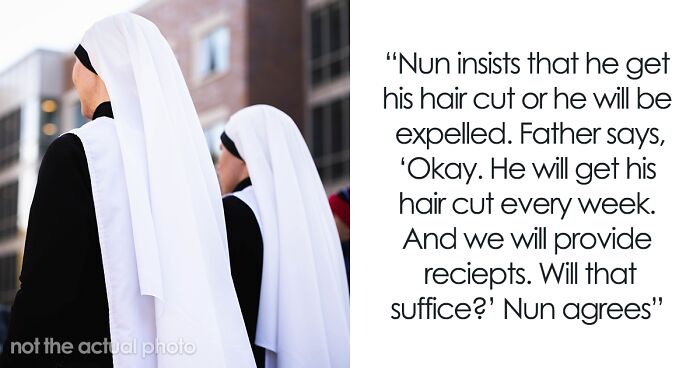
“Didn’t Jesus Have Long Hair?”: Nun Demands Kid’s Hair Be Cut, Dad Maliciously Complies
Each school has its own set of rules to maintain a safe environment and teach students discipline and responsibility. However, they’re not always fair in kids’ eyes. So they rebel.
Reddit user u/PinkOrgasmatron’s husband was one of those anarchists. When a new principal arrived, she disapproved of the student’s luscious locks and instructed him to cut them. Unable to say goodbye to his long hair, the boy came up with a plan to outsmart the head teacher of the school.
The student was sporting his luscious locks until the new principal arrived
Image credits: Gianna B (not the actual photo)
But she instructed him to cut them or he would be expelled
Image credits: mostafa meraji (not the actual photo)
Image credits: PinkOrgasmatron
Many schools still restrict student’s hairstyles
Image credits: Pixabay (not the actual photo)
Even though it might seem outdated, many schools still have rules about student’s hairstyles. It’s estimated that about 59% of dress codes in the U.S. restrict the way kids choose to wear their hair. One in five policies includes subjective language such as natural, clean, well-groomed, and even free of distractions.
The study carried out by the Government Accountability Office (GAO) found that some of them prohibit shaved lines in hair and include rules specific to naturally textured hair, or “excessive curls,” which immensely affect Black and Hispanic students.
Additionally, more than 80% of schools restrict head coverings like durags and hijabs. Only one-third of the dress codes allow them for religious or medical reasons, despite many of them holding religious or cultural significance for students.
In many K–12 schools (from kindergarten until 12th grade), it’s perfectly legal to have grooming policies, which often prevent students from wearing protective hairstyles such as braids, locks, Bantu knots, or certain lengths. Some educators claim schools should be able to control students’ hair so they can identify their gender.
Forcing kids to change their hairstyles to “the standard” can have negative effects
Image credits: cottonbro studio (not the actual photo)
Enforcing such rules can be damaging to students. School administrator Alyssa Pavlakis, who has experience researching school dress codes, said, “In order for students to get to the point where they can learn, they need to feel a sense of belonging. They need to feel cared for and loved.” If we spend part of their day telling them, “You don’t look right” or “You could be unsafe because you have a hat on,” the kids won’t feel supported but rather criticized and isolated.
Not to mention, to adhere to grooming policies, students with naturally frizzy, curly hair need to have it pressed or straightened, which usually requires a lot of heat and chemicals that damage it. Kids from low-income families sometimes don’t have access to such treatments and can’t go to the salon to “fix” the locks growing from their heads.
It’s also a part of our identity and culture. Hair can be used as a significant symbol of a religion, ethnicity, or social group. Different cultures have distinct hairstyles that are specific to their traditions, just like intricate braids in some parts of Africa. In some religions, the hair is sacred and never cut. In others, it’s often covered and symbolizes many different things, such as modesty, spirituality, or even courage. By prohibiting hair as a form of expression, schools are taking away a part of who they are.
Also, some students are at the age when they care a lot about what other people think of them, so having a good, self-chosen hairstyle can do wonders for their self-confidence. When students aren’t allowed to wear hairstyles that make them feel comfortable, it may lead to feelings of discomfort and inadequacy. Restricting their choices also prevents them from expressing their own style and individuality.
New laws are appearing to prevent hair discrimination
Image credits: Pixabay (not the actual photo)
Fortunately, actions have been taken to address some issues with these policies. In the UK, schools are warned against punishing students for wearing their hair in natural afro styles such as braids, cornrows, and plaits to prevent discrimination. Uniform and appearance policies that ban certain hairstyles without exceptions based on race and religion will be unlawful.
The U.S. also legislated a law called the CROWN Act that forbids discrimination based on hair texture and style. CROWN stands for “Creating a Respectful and Open World for Natural Hair,” making these grooming codes illegal in educational and professional environments. First enacted in California in 2019, the law is now passed in 24 states. Not all of us are as brave to stand up for ourselves as the hero in this story, so this legislation gives us hope of leaving hair discrimination in the past.
Commenters had a lot of questions about the whole situation
The story received various reactions
Commenters joined in and shared similar stories
Poll Question
Thanks! Check out the results:
1st grade, catholic school, 1972. Teacher was an older nun, usually ok, but at times crabby. Well, 1st grade has kids usually age 6 and 7. There was a boy in my class with hair barely touching his collar. Well, sister Monica told him if he didn't get his hair cut, she'd make him use the girls restroom. Again this was to a little boy 6 or 7 years old. She thought boys needed sorry hair, which is pretty dumɓ. Every painting, drawing etc of Jesus, who they worship, showed Jesus with long hair. They such hypocrites
Me in high school from 10-12 grade. Except substitute dress code or lack thereof. I am someone who has always devoured instruction books and handbooks. For 10-11 grade, the dress code was basically as long as it was not shorts and skirts were below fingertips and considered appropriate by parents. Cue malicious compliance. Every single outfit I wore were allowed to the letter by the handbook. And my mom bought these clothes and watched me leave the house in them every day. Every day I’d be sent to the principals office by summons because a teacher (not my own) was offended by my clothes. Every day I’d tell the principal to show me where I was out of compliance. He couldn’t so would have to send me back to class. One day he thought he was going to play the upper hand by threatening to call my mom. I smiled and said go for it. He dialed on speaker phone and was immediately shut down by my mom for wasting her time and mine over something I was in compliance over to the letter.
Guys could wear dresses if they wanted but girls who didn’t immediately change to comply with the dress code would be suspended and denied walking at graduation. Everyone looks around, roars with laughter and stayed put. Not one single person changed. They couldn’t suspend half of the school and we knew it. They also couldn’t prove who led the charge so I was still allowed to walk. The next year, they allowed shorts according to the same length guidelines of dresses/skirts. ETA: should’ve mentioned, the last time the principal tried to mess with me and call my mom, when he came out of his office shaking I laughed and asked, “where did you think I got MY attitude from?”
Load More Replies...1st grade, catholic school, 1972. Teacher was an older nun, usually ok, but at times crabby. Well, 1st grade has kids usually age 6 and 7. There was a boy in my class with hair barely touching his collar. Well, sister Monica told him if he didn't get his hair cut, she'd make him use the girls restroom. Again this was to a little boy 6 or 7 years old. She thought boys needed sorry hair, which is pretty dumɓ. Every painting, drawing etc of Jesus, who they worship, showed Jesus with long hair. They such hypocrites
Me in high school from 10-12 grade. Except substitute dress code or lack thereof. I am someone who has always devoured instruction books and handbooks. For 10-11 grade, the dress code was basically as long as it was not shorts and skirts were below fingertips and considered appropriate by parents. Cue malicious compliance. Every single outfit I wore were allowed to the letter by the handbook. And my mom bought these clothes and watched me leave the house in them every day. Every day I’d be sent to the principals office by summons because a teacher (not my own) was offended by my clothes. Every day I’d tell the principal to show me where I was out of compliance. He couldn’t so would have to send me back to class. One day he thought he was going to play the upper hand by threatening to call my mom. I smiled and said go for it. He dialed on speaker phone and was immediately shut down by my mom for wasting her time and mine over something I was in compliance over to the letter.
Guys could wear dresses if they wanted but girls who didn’t immediately change to comply with the dress code would be suspended and denied walking at graduation. Everyone looks around, roars with laughter and stayed put. Not one single person changed. They couldn’t suspend half of the school and we knew it. They also couldn’t prove who led the charge so I was still allowed to walk. The next year, they allowed shorts according to the same length guidelines of dresses/skirts. ETA: should’ve mentioned, the last time the principal tried to mess with me and call my mom, when he came out of his office shaking I laughed and asked, “where did you think I got MY attitude from?”
Load More Replies...
 Dark Mode
Dark Mode 

 No fees, cancel anytime
No fees, cancel anytime 






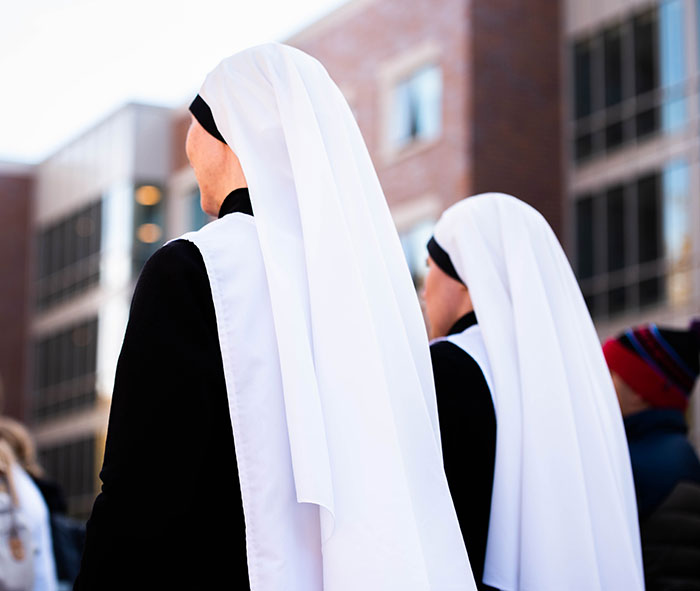

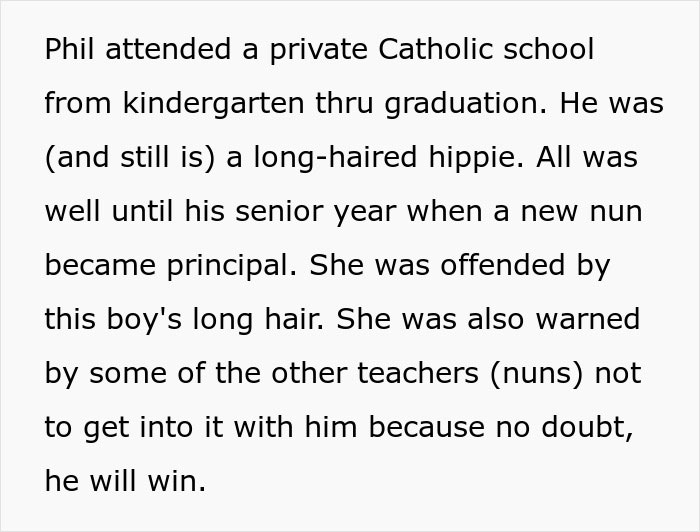
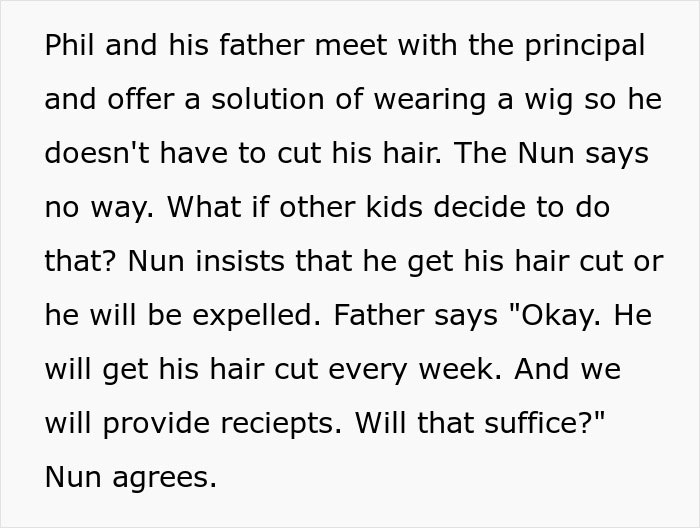
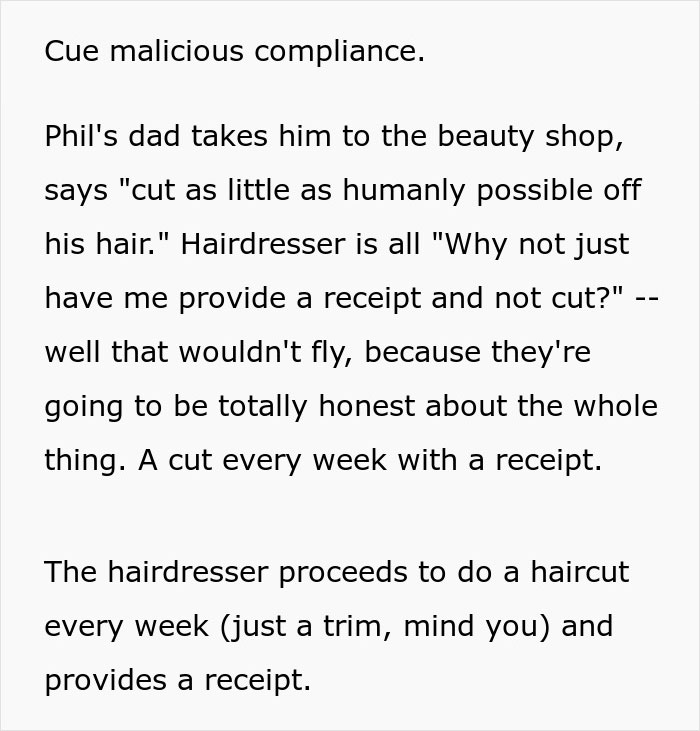
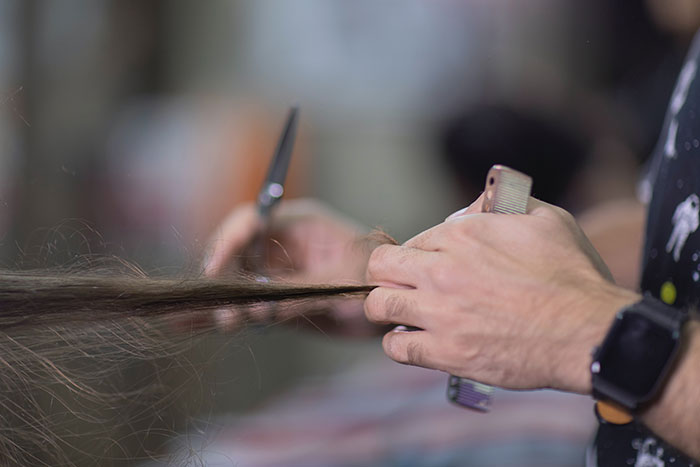




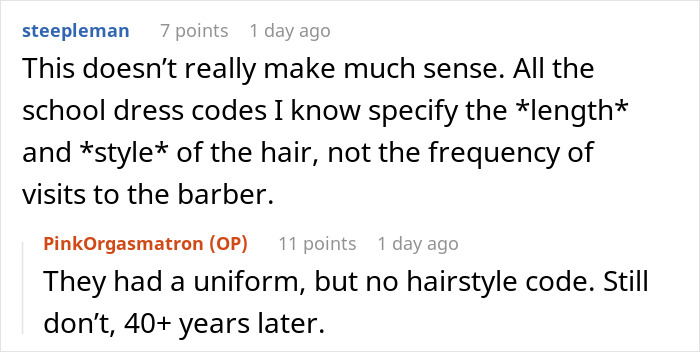

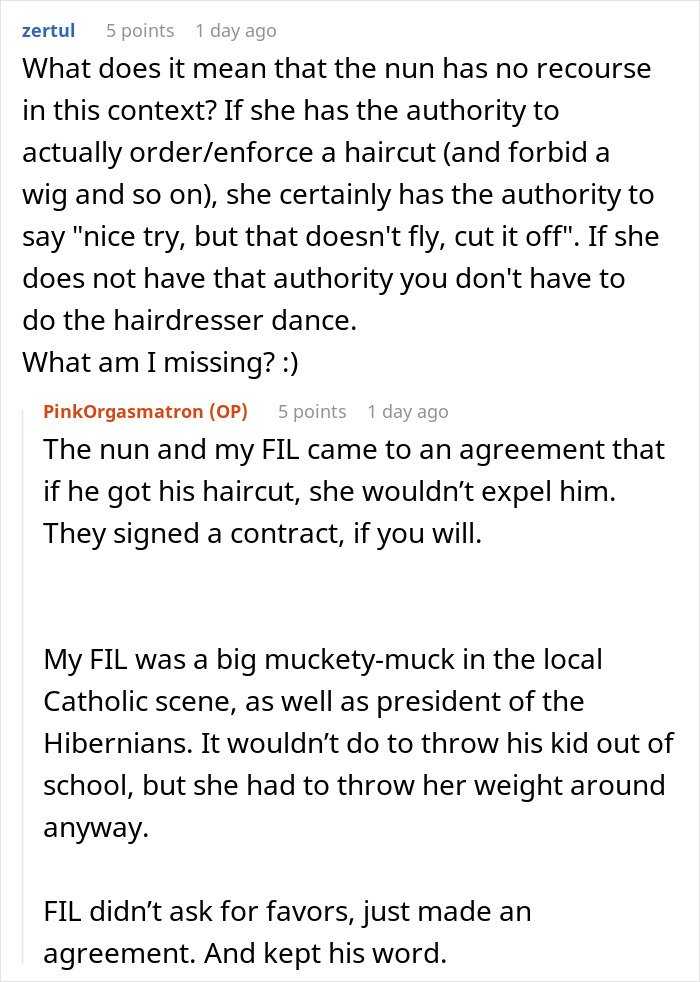
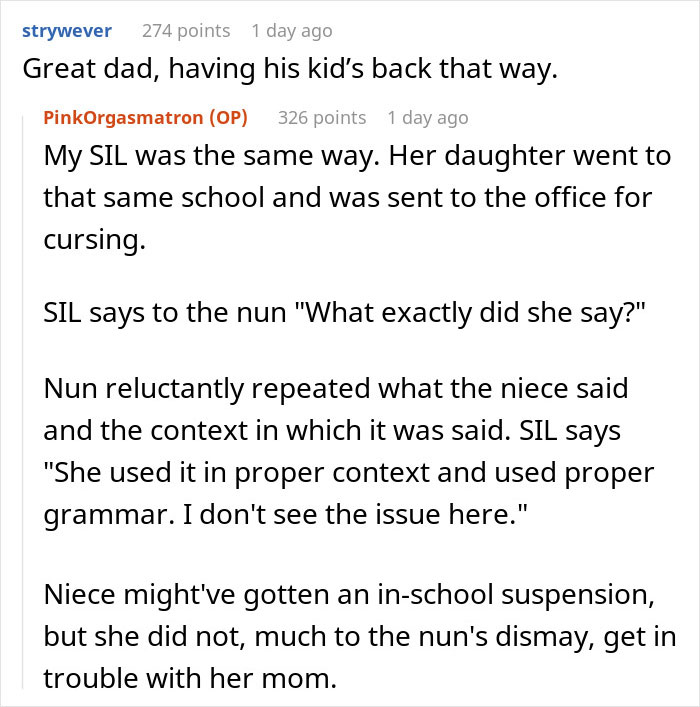

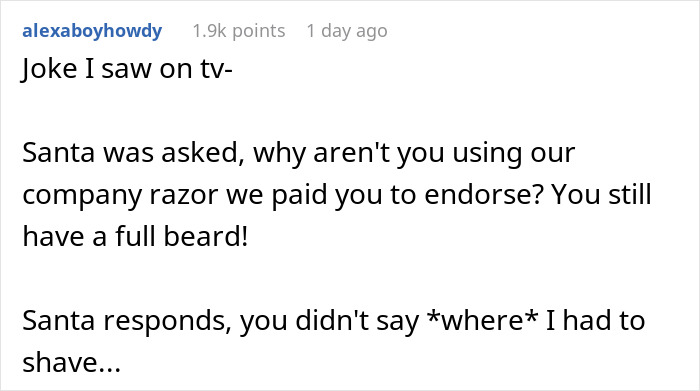




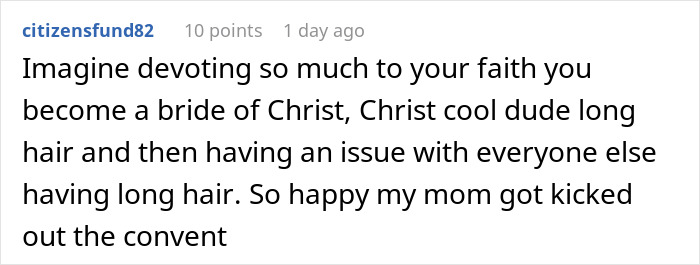



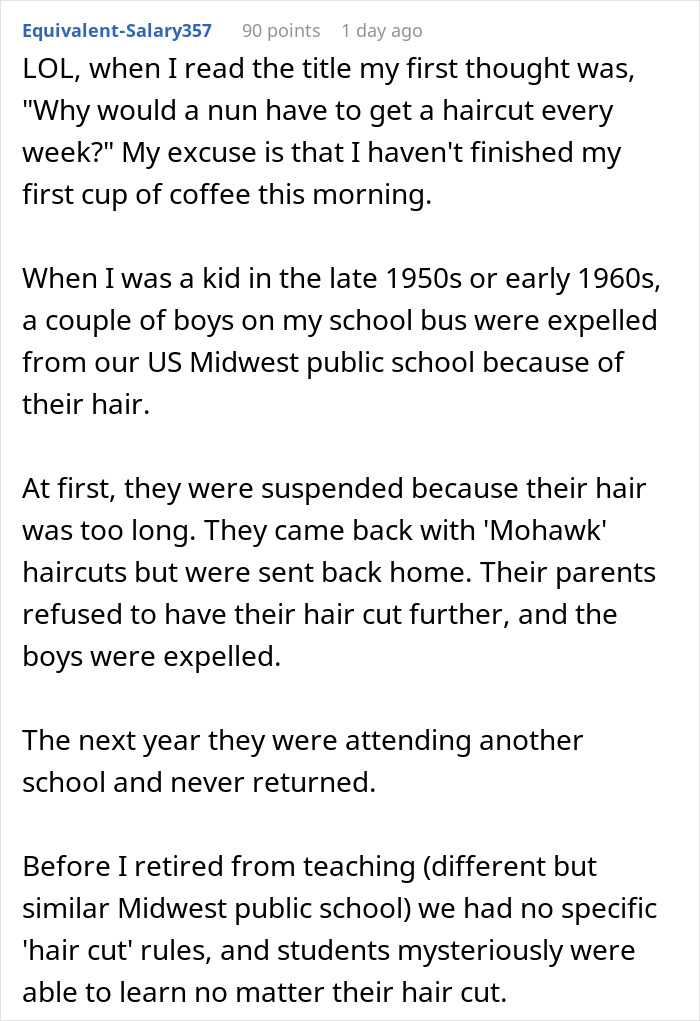
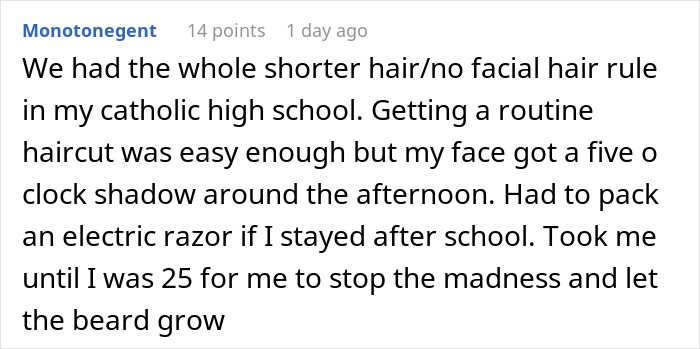
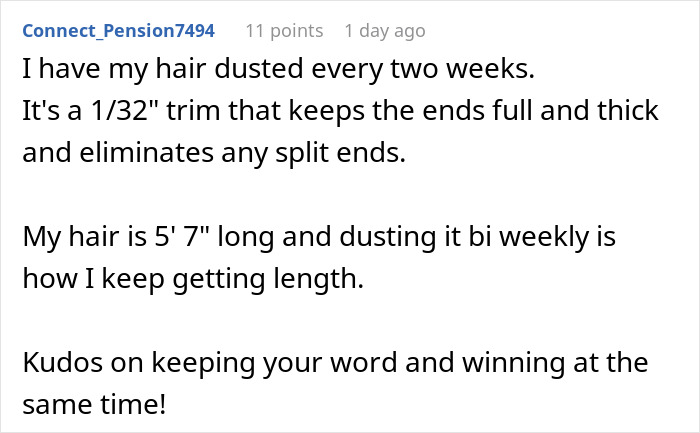














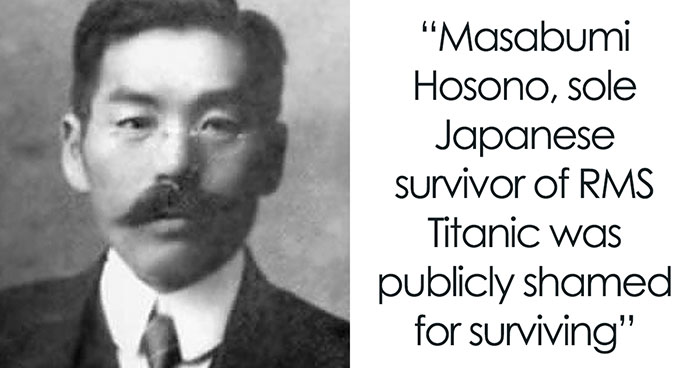






























44
26